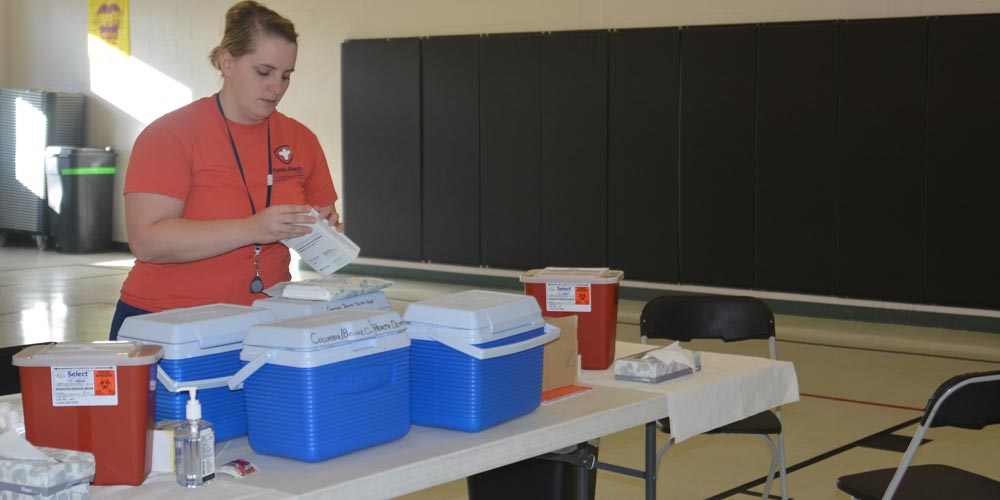
Local
2018-2019 flu season: are Minnesota’s children protected?
The Minnesota Department of Health and pediatricians around the state are working together to ensure children receive the flu vaccine this season. The recommendation follows CDC’s report on data collected from the National Immunization Survey, which calls last year’s deadly flu season one of the worst in recent history.
172 children died from influenza or flu-related complications nationwide last year. CDC reports that 74% of them were not vaccinated. In Minnesota alone, over 6400 people were hospitalized and 5 children died. Children between the ages of 6 months and 4 years had the highest rate of coverage, but the rate declined in older age groups. The report indicates that convenience played the largest role in whether older children were vaccinated.
Although 62% of Minnesota children were vaccinated last year, state public health officials say that it’s not enough. They want to remind parents that vaccination is the most effective way to protect children in schools and daycares.
Star Tribune
CDC Flu Season
MDH: 2018-2019 Minnesota Fall Flu Guide (PDF)
National
Multistate Listeria outbreak linked to deli ham; one dead
The United States Department of Agriculture’s Food Safety and Inspection Service (USDA-FSIS) is monitoring a multistate listeriosis outbreak associated with eating ready-to-eat deli ham products. On Wednesday, October 3, North Carolina-based company, Johnston County Hams, Inc. initiated the recall of about 89,000 pounds of ham products, including frozen items that may have a shelf life through September 2019.
The Centers for Disease Control and Prevention’s (CDC) investigation of the outbreak has confirmed four cases in North Carolina and Virginia between July 2017 and August 2018, including one death.
Listeriosis is caused by the bacteria, Listeria monocytogenes, and affects 1600 people annually. According to CDC estimates, most people require hospitalization and 260 die from this disease each year. Pregnant women are ten times more likely to acquire the disease compared to the rest of the population, but other high risk individuals include people over 65 years of age and immunocompromised people.
Pregnant women may experience mild flu-like symptoms one to four weeks after exposure, but the disease has more serious consequences for the pregnancy and newborn, including miscarriages, premature delivery, still-births or life-threatening newborn conditions. Non-pregnant individuals may experience early gastrointestinal disease, followed by mild flu-like symptoms that can progress to signs of meningitis (headache, stiff neck), signs of encephalitis (confusion, convulsions, loss of balance), or sepsis.
The recall includes ready-to-eat ham products produced between April 3, 2017 and October 2, 2018. USDA-FSIS, CDC, and state public health officials recommend disposing of any products with the establishment number “EST.M2646.” Officials also recommend sanitizing refrigerator or freezer shelves and retailer meat slicers where recalled ham was stored. The CDC urges immediate medical attention for high risk individuals experiencing flu-like symptoms 14 days after consuming potentially contaminated products.
International
FAO and African Union launch agricultural mechanization framework
On Friday, the Food and Agriculture Organization of the United Nations and the African Union Commission introduced the Sustainable Agricultural Mechanization Framework for Africa (SAMA) (PDF). The framework addresses the challenges of agriculture on the continent and introduces key elements to help nations develop their own strategies for implementing efficient, sustainable agricultural improvements based on the country’s individual needs.
Agricultural mechanization involves the manufacture, distribution, maintenance, and use of agricultural equipment for energy-intensive tasks such as land development, agricultural production, harvesting, and rural transportation.
The framework proposes a strong financial and political commitment to develop ten priority elements, including capacity for information exchange, business opportunity, reliable manufacture and distribution of machinery, human resource development, and cross-border collaboration. The primary purpose is to improve productivity and efficiency on farms where manual labor is traditionally used. Additionally, a large focus is to boost rural employment and reduce pre and post-harvest food losses.
Current farming methods fail to meet the increasing food demand driven by rapid economic growth, urbanization, and population growth on the continent. The framework concludes that agricultural mechanization is essential to meet the Zero Hunger vision to eliminate hunger and malnutrition in Africa by 2030 (Goal 2 of the Sustainable Development Goals).
Food and Agriculture Organization of the United Nations
Feed Africa (PDF)
Questions, comments, feedback about today's Weekly Update? Please email Dr. Lauren Bernstein
Receive the Weekly Update right in your inbox on Tuesdays and Thursdays. Subscribe now at z.umn.edu/WeeklyUpdateSubscribe
